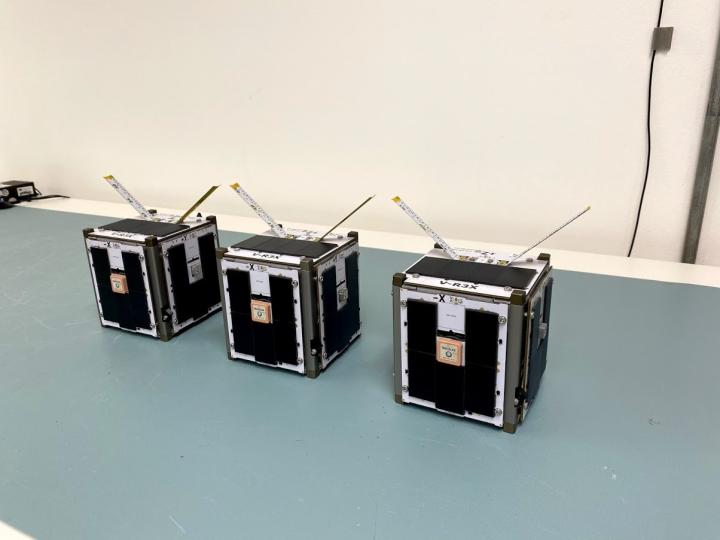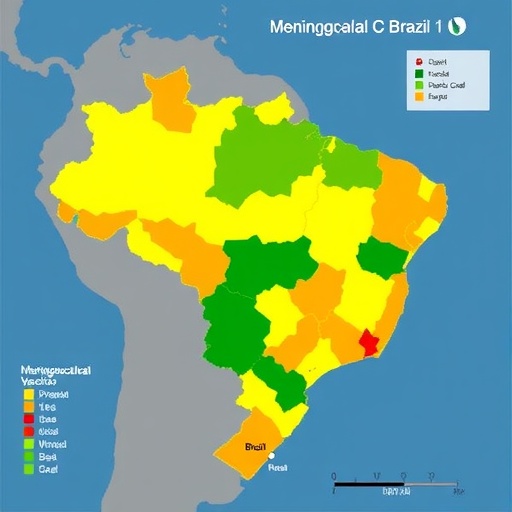Carnegie Mellon’s Zac Manchester leads three-satellite experiment

Credit: Carnegie Mellon University
PITTSBURGH–A NASA mission slated for launch on Friday will place three tiny satellites into low-Earth orbit, where they will demonstrate how satellites might track and communicate with each other, setting the stage for swarms of thousands of small satellites that can work cooperatively and autonomously.
Zac Manchester, an assistant professor in Carnegie Mellon University’s Robotics Institute and the mission’s principal investigator, said small satellites have grown in popularity over the last 10 years, as some companies already are launching hundreds into orbit to perform tasks such as Earth imaging and weather forecasting.
These satellites now are individually controlled from the ground. As swarms grow bigger and more sophisticated, Manchester noted, they will need to respond to commands almost as a single entity. The new mission, dubbed V-R3x, will test technologies that might make that possible.
“This mission is a precursor to more advanced swarming capabilities and autonomous formation flying,” Manchester said.
NASA also is interested in using swarms of small satellites beyond Earth. Swarms of satellites around the moon, for instance, could provide communications and navigation aid for lunar exploration, including NASA’s Artemis program. It will be essential that extraterrestrial swarms operate autonomously, Manchester said.
V-R3x, a NASA Small Spacecraft Technology program-funded technology demonstration mission, is implemented by a small, dedicated group of engineers known as Payload Accelerator for CubeSat Endeavors (PACE) at NASA’s Ames Research Center in Silicon Valley. The group aims to design, develop and fly space experiments rapidly and more cost effectively.
V-R3x will deploy three so-called CubeSats into low-Earth orbit. These standardized 10-centimeter cubes each weigh about a kilogram and, once deployed, will form a mesh network, exchanging radio signals as they slowly drift apart over a three-to-four month period.
The satellites also will be equipped with special S-band radios capable of time-of-flight ranging. That is, they can measure how long it takes a radio signal to travel to another satellite and bounce back. That signal’s time of flight can then be used to calculate the distance between the two satellites within half a meter.
The three satellites will be launched aboard a SpaceX Falcon 9 from Cape Canaveral, Florida. In a testament to the popularity of small satellites, this flight will be a “rideshare” that will carry dozens of microsatellites and nanosatellites for a variety of commercial and government customers.
Manchester, who joined CMU’s Robotics Institute this past September, conceived the mission while he was an assistant professor of aeronautics and astronautics at Stanford University. His graduate student at Stanford, Max Holliday, did much of the CubeSat construction in his kitchen because of the COVID-19 pandemic. A CMU Ph.D. student in robotics, Kevin Tracy, has been developing software for the experiment.
“It looks like there’s a bright future here for this kind of stuff,” Manchester said of CMU, referring to two CMU lunar rovers now pending launches and other space-related research underway at the university and in Pittsburgh.
Though his own training is in aeronautics — V-R3x is the third space mission for which he has served as principal investigator — Manchester emphasized that joining the Robotics Institute makes perfect sense because of the overlap that exists with robotics.
“Spacecraft are robots, too,” he said.
The V-R3x CubeSats will be placed in a polar orbit, which means they will pass over Pittsburgh about twice a day, 12 hours apart. Manchester said he hopes to set up a ground station at CMU to communicate with the satellites, though he acknowledged that none of the ground stations being used for the mission have that much to do.
“The satellites will wake up and do their thing autonomously,” he explained. “We mainly need to make sure that we get their data downloaded.”
###
Media Contact
Byron Spice
[email protected]




